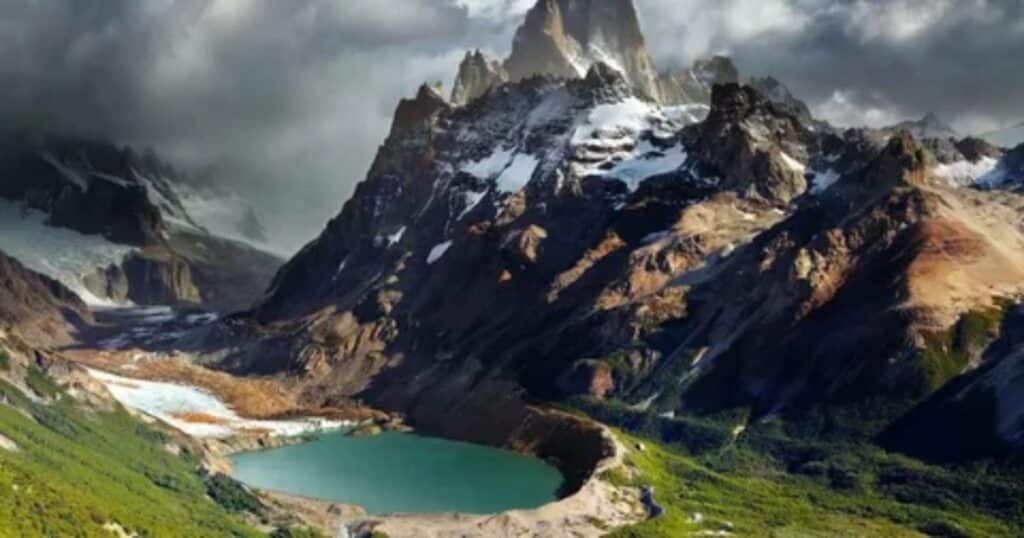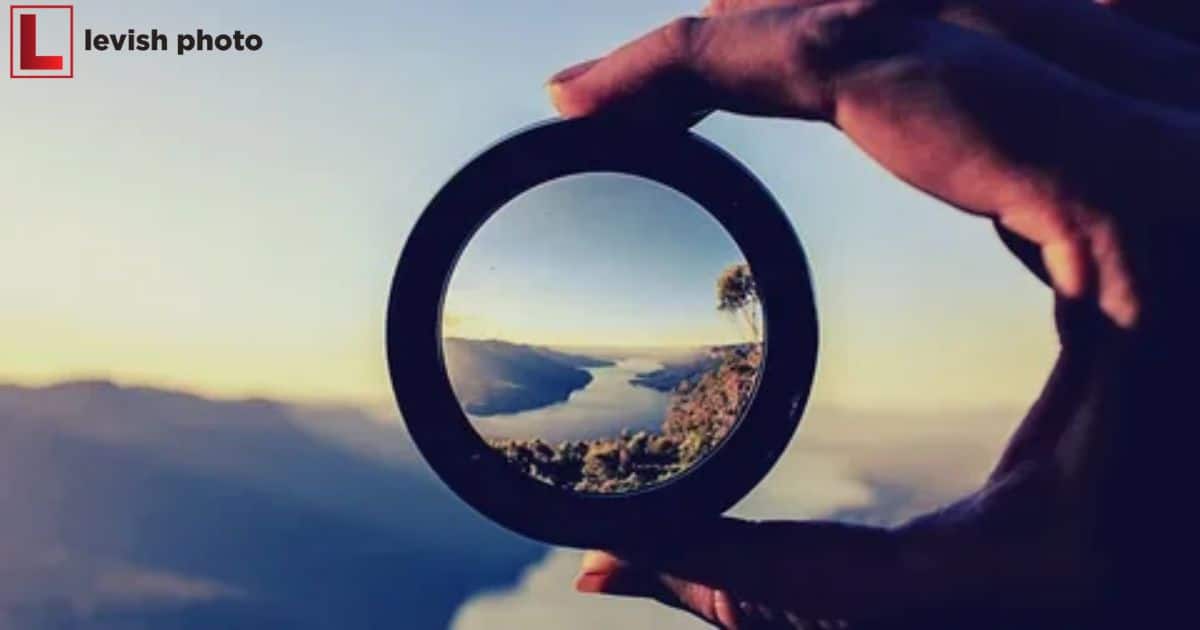Photography is an art form that captures moments, scenes, and subjects within a frame. Understanding what is encompassed by the full direct view in photography is essential for creating compelling and meaningful images. In simple terms, the full direct view refers to everything that is visible within the boundaries of the photograph’s frame.
Imagine gazing through the lens of your camera, ready to freeze a moment in time. The full direct view is your canvas, and within it lies the power to tell a story, evoke emotions, and capture the essence of your subject. It’s not just about what you see, it’s about how you see it.
The full direct view in photography extends beyond the mere inclusion of subjects; it encompasses an intricate interplay of composition, lighting, perspective, and context. It’s about selecting the right angles, balancing elements, and framing your subject in a way that conveys your intended message. The full direct view invites you to explore not just what’s within the frame but also what’s outside it.
Understanding the Frame
Before we delve into the specifics of what the full direct view includes, it’s essential to understand the concept of the frame in photography. The frame is the rectangular or square boundary within which your photograph is composed. It is what separates the content of the photograph from the surrounding environment. The choices you make within this frame have a profound impact on the final image.
Composition and Framing
Composition and framing are two critical elements of photography that directly influence what is included in the full direct view. How you position your subject within the frame, the angles you choose, and the way you balance the various elements in the scene all affect the composition.
Table for Composition and Framing
| Technique | Description |
| Rule of Thirds | Divide the frame into nine equal parts with two horizontal and two vertical lines. Position your subject or key elements at the intersections or along these lines for balanced composition. |
| Leading Lines | Utilize natural or man-made lines in the frame to guide the viewer’s eye towards the subject. Leading lines can add depth and structure to the image. |
| Framing Within Framing | Create depth and context by capturing your subject through natural or man-made frames like doorways, windows, or arches. |
| Negative Space | Use empty or negative space to emphasise your subject. Negative space can create a sense of balance and draw the viewer’s attention to the main subject. |
Effective composition and framing enable you to capture more than just the subject; they allow you to tell a visual story that engages viewers and conveys the intended message or emotion. These techniques can be used in various photography genres, from portraits to landscapes, enhancing the full direct view and creating visually compelling images.
Aspect Ratio
The aspect ratio of your frame is another essential consideration. The aspect ratio is the ratio of the width to the height of the frame. Common aspect ratios include 4:3, 3:2, and 16:9. The choice of aspect ratio can influence what you include in your full direct view. For instance, a wide 16:9 frame is great for capturing panoramic landscapes, while a 1:1 square frame can make portraits or details stand out.
Subject Matter
When packing my camera bag for wedding photography, the subject matter of your photograph is a vital component of the full direct view. It is the primary focus of your image and often the reason you decided to take the photograph in the first place. The subject matter can be just about anything, and it’s up to you to decide what you want to include in your frame. Here are some common types of subject matter.
People
Portraits are a popular form of photography, and the full direct view often includes the subject’s face, body, and any other relevant details. When photographing people, expressions, emotions, and interactions play a crucial role in defining the subject matter.
Landscapes

Landscape photography encompasses vast scenes and natural environments. In this case, the full direct view may include mountains, rivers, forests, and the horizon. The challenge is to capture the grandeur and beauty of these landscapes in a single frame.
Objects
Photographing objects, whether they are everyday items or unique artifacts, involves showcasing their form, texture, and details. The full direct view often includes the entire object, providing viewers with a clear perspective.
Events
Event photography captures moments in time, and the full direct view typically features a combination of people, surroundings, and activities. Capturing the essence of an event involves thoughtful framing and timing.
Nature and Wildlife
Photographing nature and wildlife can be unpredictable, but the full direct view usually includes the subject in its natural habitat. Capturing wildlife may involve patience and a telephoto lens to maintain a safe distance.
Architecture
When photographing buildings and architectural elements, the full direct view showcases the structure’s design, details, and context within its environment. It’s about capturing the essence of architecture.
Context and Storytelling
The full direct view goes beyond merely including the subject within the frame. It also involves providing context and telling a story through the photograph. Context is crucial for helping viewers understand the subject matter and the significance of the moment captured.
Background and Surroundings
Consider what’s happening around the subject. Are there people, objects, or elements that provide additional information or depth to the story? The background can complement or contrast with the subject, adding layers of meaning to the image.
Time and Place
The time and place of the photograph can be essential parts of the full direct view. It’s not just about capturing a moment; it’s about capturing a moment in a specific context. This could be a historical event, a cultural celebration, or a personal milestone.
Emotion and Expression
The emotions and expressions of your subjects can also be a vital part of the full direct view. A smile, a tear, a furrowed brow—all of these convey meaning and evoke emotions in the viewer.
Light and Shadow
The interplay of light and shadow significantly influences what is included in the full direct view. The way light falls on your subject and its surroundings can make or break a photograph.
Direction of Light
The direction of light affects how your subject is illuminated. Front lighting, where the light source is behind the camera, provides even illumination but can sometimes lack depth. Side lighting can reveal texture and form, while backlighting can create silhouettes and a sense of drama.
Quality of Light
Consider the quality of light, which can be soft or harsh. Soft light, often found during the golden hours of sunrise and sunset, produces gentle and flattering illumination. Harsh light, on the other hand, can create strong contrasts and dramatic effects.
Shadows
Shadows add depth and dimension to your photograph. They can be used creatively to frame or highlight the subject. Pay attention to how shadows interact with the subject matter to enhance your composition.
Perspective and Depth
The perspective from which you shoot and the sense of depth in your photograph also play a significant role in what’s included in the full direct view.
Angle and Viewpoint
Changing your shooting angle or viewpoint can provide a fresh perspective on your subject. Whether you’re shooting from eye level, from above, or from below, these choices influence the composition and what’s included in the frame.
Foreground, Middleground, and Background
Incorporating elements in the foreground, middleground, and background of your frame can add depth and a sense of scale. This layered approach gives viewers more to explore within the full direct view.
Focal Length and Depth of Field
The choice of focal length and depth of field in your camera settings determines how much of the scene is included in the full direct view.
Focal Length
Wide-angle lenses capture more of the scene, making them suitable for landscapes and group shots. Telephoto lenses, on the other hand, allow you to zoom in on distant subjects, focusing attention on specific details.
Depth of Field
Adjusting your aperture settings controls the depth of field. A shallow depth of field isolates the subject from the background, while a deep depth of field keeps more of the scene in focus.
Editing and Post-Processing
The full direct view isn’t limited to what’s captured in the camera. Post-processing and editing also influence what’s included in the final image.
Cropping
Cropping an image can change the composition and what’s included in the frame. It allows you to fine-tune the composition to emphasise the subject and remove distractions.
Colour and Contrast
Adjusting colour and contrast in post-processing can enhance or alter the mood and atmosphere of the photograph, further shaping the full direct view##
FAQs
What is the full direct view in photography?
The full direct view in photography refers to everything that’s captured within the boundaries of the frame, including the subject and the surrounding elements.
How can I enhance my composition using the full direct view?
To enhance your composition, consider techniques like the rule of thirds, leading lines, and framing within framing, which guide the viewer’s eye and add depth to your photographs.
Why is context important in the full direct view?
Context adds depth and meaning to your photographs by showing the subject in its environment, helping viewers understand the story or significance of the image.
What role does light play in the full direct view?
Light is crucial for setting the mood and tone of your photograph. It affects how your subject is illuminated and the atmosphere it conveys.
How can I use post-processing to adjust the full direct view?
In post-processing, you can crop the image, adjust colours and contrast to fine-tune the composition and mood of your photograph, further shaping the full direct view.
Conclusion
In the world of photography, your camera becomes a window to the world. Every click captures more than just an image; it tells a story, shares an emotion, and brings meaning to moments. The full direct view is your canvas, a frame that holds limitless possibilities. With careful composition, an understanding of light, and a keen eye for context, you can create photographs that speak to the heart and mind.
Every choice you make, from subject matter to framing, from light to post-processing, influences the full direct view and defines your unique vision as a photographer. So, the next time you lift your camera, remember that within the frame, you hold the power to convey the extraordinary in the ordinary and capture the beauty in the everyday. Photography is an art, and in art, there are no limits. The full direct view is not confined to a set of rules, it’s a playground of creativity.
As you explore this world, experiment with different techniques and approaches, for every click is a chance to grow as a photographer. Keep in mind that your full direct view can be your storytelling tool, your emotional medium, and your visual diary. Embrace it, refine it, and let it speak through your photographs, taking you on a journey where every frame tells a unique and beautiful story.
